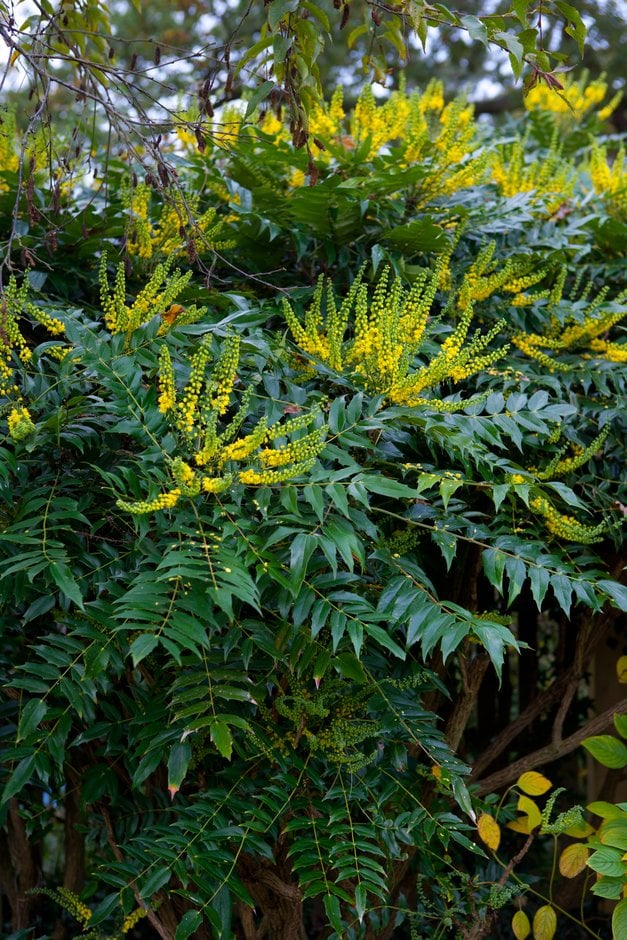Mahonia × media 'Charity'
Oregon grape 'Charity'
An upright evergreen shrub to 4m tall, with pinnate dark green leaves composed of up to 21 lance-shaped leaflets, and small, slightly fragrant, cup-shaped yellow flowers borne in erect, clustered terminal racemes to 35cm long in late autumn and winter
Size
Ultimate height
2.5–4 metresTime to ultimate height
10–20 yearsUltimate spread
2.5–4 metresGrowing conditions
Moisture
Moist but well–drained, Well–drainedpH
Acid, Alkaline, NeutralColour & scent
| Stem | Flower | Foliage | Fruit | |
| Spring | Green | |||
|---|---|---|---|---|
| Summer | Green | |||
| Autumn | Yellow | Green | ||
| Winter | Yellow | Green |
Position
- Full sun
- Partial shade
Aspect
North–facing or South–facing or West–facing or East–facing
Exposure
Exposed or Sheltered Hardiness
H5Botanical details
- Family
- Berberidaceae
- Native to GB / Ireland
- No
- Foliage
- Evergreen
- Habit
- Bushy
- Potentially harmful
- Berries are ornamental, not to be eaten. Wear gloves and other protective equipment when handling
- Genus
Mahonia are evergreen shrubs with leathery, pinnate leaves which are often spine-toothed, and clustered racemes of sometimes fragrant yellow flowers, sometimes followed by black or purple berries
- Name status
Accepted
How to grow
Cultivation
Good for a woodland setting in a sheltered or exposed situation with full sun or partial shade. See mahonia cultivation for further advice
Propagation
Propagate by semi-ripe cuttings
Suggested planting locations and garden types
- City and courtyard gardens
- Coastal
- Cottage and informal garden
- Wildlife gardens
- Low Maintenance
- Flower borders and beds
Pruning
Pests
Generally pest-free
Diseases
Generally disease-free
Get involved
The Royal Horticultural Society is the UK’s leading gardening charity. We aim to enrich everyone’s life through plants, and make the UK a greener and more beautiful place.

